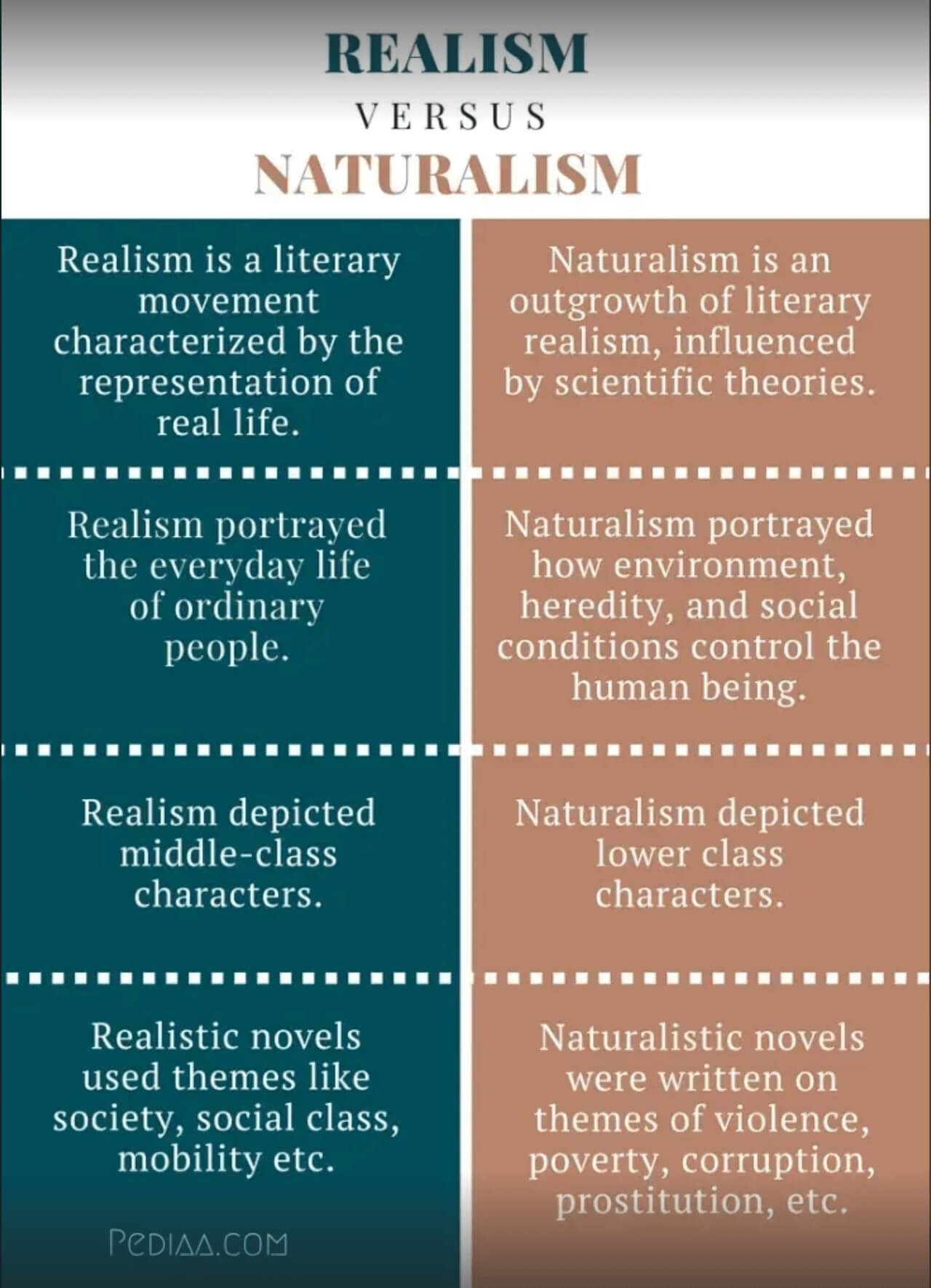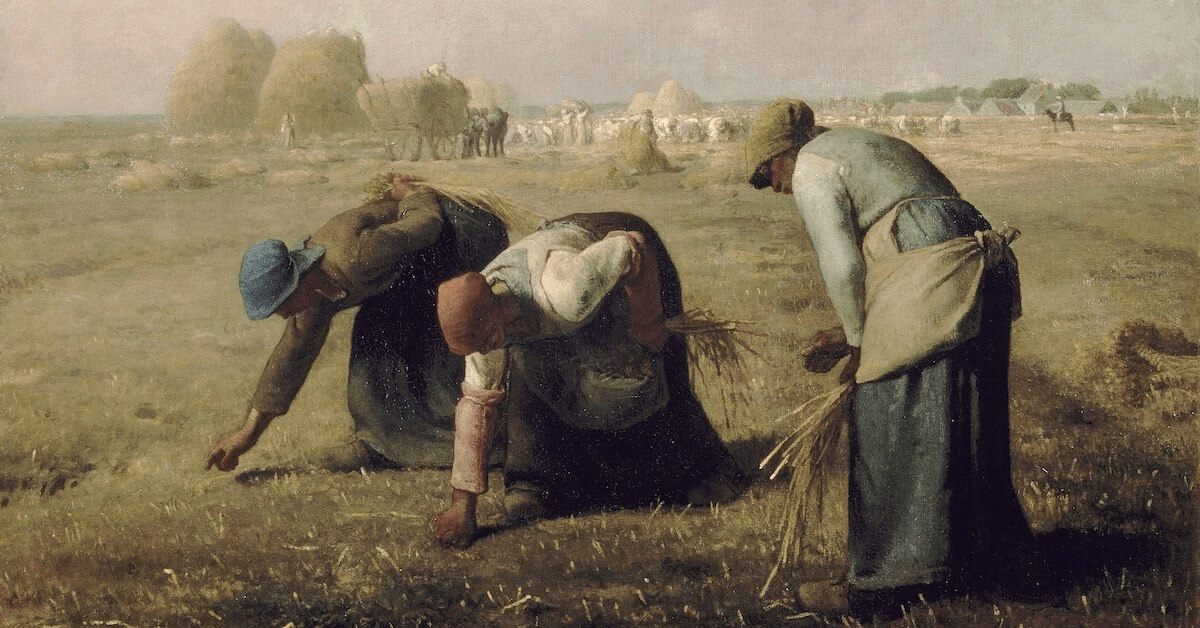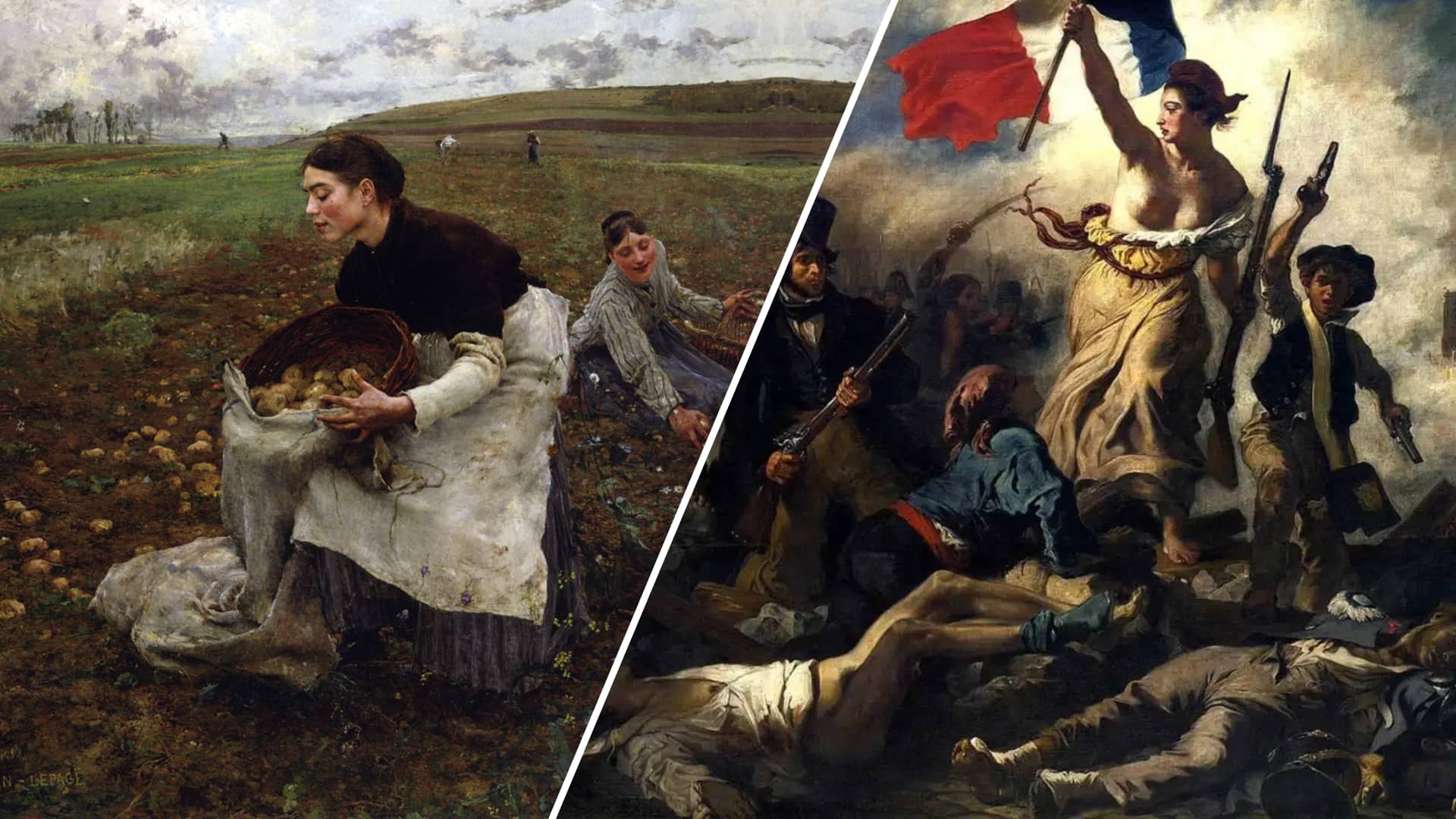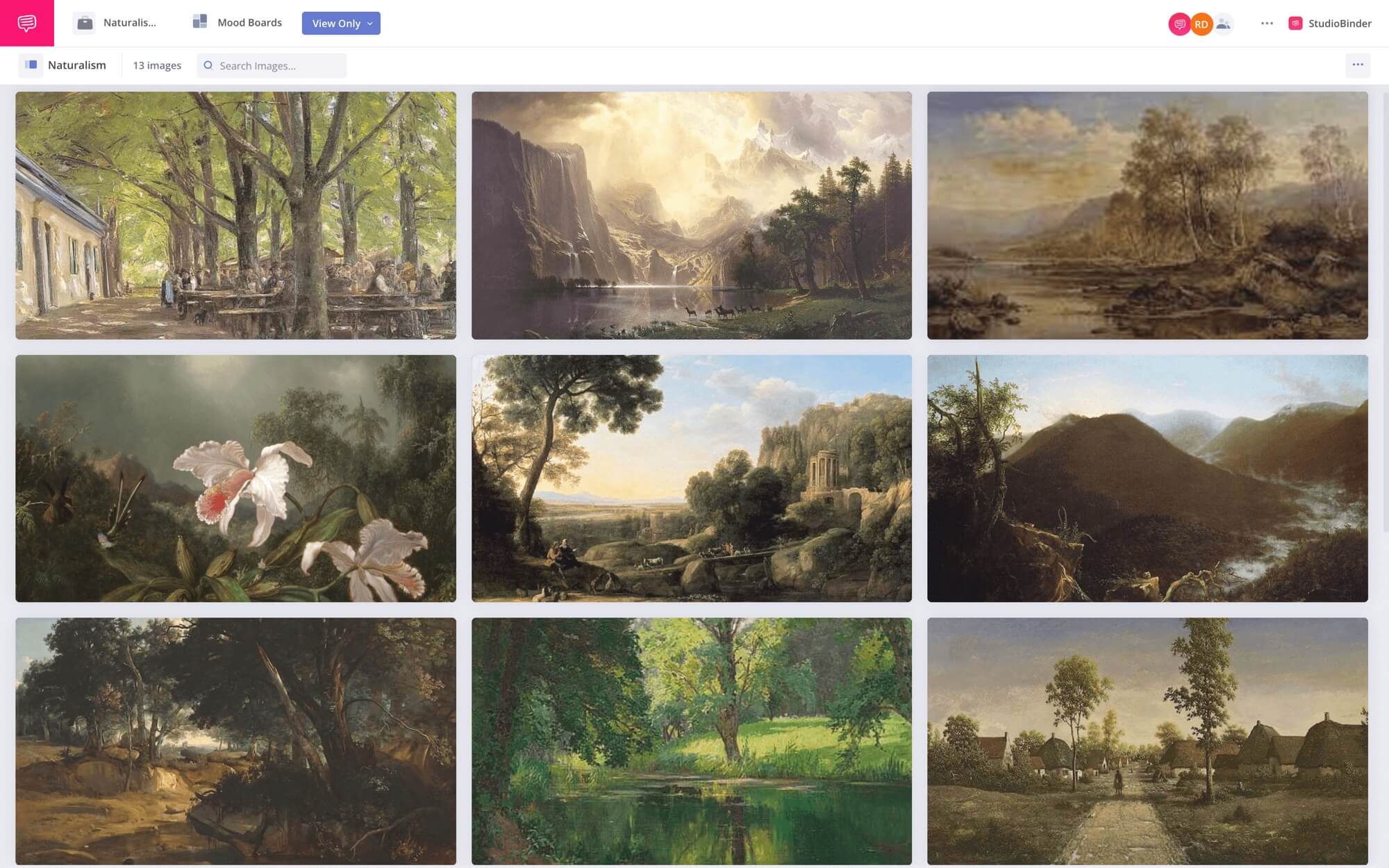Naturalism vs realism: two different but similar things. So, what is the difference between realism and naturalism? We’re going to break down naturalism vs realism by defining both terms. Then we’ll explore naturalism and realism examples. By the end, you’ll know what makes naturalism and realism different from one another.
Difference Between Realism and Naturalism
Background on Naturalism vs Realism
It can be a bit tricky to differentiate naturalism and realism because both terms refer to different things depending on their corresponding fields. For example, the term “naturalism” refers to a philosophical belief system, a literary movement, and an art style. Realism predominantly refers to a 19th-century art style and a style of film.
This video breaks down the difference between realism and naturalism in further detail.
What’s the Difference Between Realism & Naturalism? By ARTiculations
We’re going to break down the distinctions of naturalism vs realism in a bit, but first, let’s define naturalism.
NATURALISM DEFINITION
What is naturalism?
Naturalism is a philosophical and artistic principle that places emphasis on nature over the supernatural. Naturalism was propelled in the arts in large part due to the writing of French novelist Émile Zola; rejecting romanticist views of early 18th-century Europe, and building a scientifically objective perspective in its stead.
Fields of Naturalism:
- Philosophy
- Theater
- Literature
- Film
Naturalism vs Realism
Naturalism examples
Naturalism has a few different definitions depending on its corresponding field. So, let’s break down each in short detail:
Naturalism in philosophy
Naturalism in philosophy is a bit tricky; essentially it states that the world is controlled by natural law. So, what is natural law? Natural law is a system of laws that dictate human; philosophers disagree on whether or not God exists within natural law.
This video from Crash Course breaks down Naturalism in further detail.
Naturalism vs Realism Art & Philosophy • Natural Law Theory: Crash Course Philosophy
Naturalism has been a major field of study in philosophy for millennia. Principles from philosophical naturalism have surely crossed over to other fields of naturalism.
Naturalism in literature
The naturalist literature movement was founded in 1880 by French novelist Émile Zola. Naturalist literature seeks to reject romanticist depictions of life and build natural, or objectively true depictions in its stead.
Crash Course has us covered again.
Naturalism vs Realism Theatre • Zola, France, Realism, and Naturalism, Examined by Crash Course
Shoutout to Crash Course host Mike Rugnetta for the quote “Naturalism is a lot like realism… only more realer.” It’s difficult to distinguish naturalism from realism – but in terms of literature and theater, naturalism is realism… but more real. Naturalists pushed literature and theater in the direction of “real life” with grammatically incorrect dialogue, authentic characters, and rejection of sensationalism.
Naturalism in art
Naturalism in art refers to a sub-movement of the 19th-century realist movement that sought to emphasize natural history over social issues of the time. As such, naturalism in art is distinguished mostly for its subject matter rather than its form.
This video from Musée d'Orsay breaks down the history of the naturalism art movement.
Naturalism vs Realism Art, via Musée d'Orsay
Naturalism as an art perspective can be traced back to the Middle Ages. Considering this, we can see how artists have sought to represent the mundanity of real-life for hundreds of years.
Naturalism in cinema
Nowadays, Naturalism is mostly popular with films and television shows. That said, there aren’t many films or shows that truly fit the criteria of Naturalism. Remember, Naturalism seeks to convey life as it is at a given moment in time, devoid of unnecessary sensation.
I’d say that the best example of Naturalism in cinema can be found in one of the best films of the French New Wave: Francois Truffaut’s The 400 Blows. Check out the trailer below.
Naturalism vs Realism • Naturalism in Film – The 400 Blows
The 400 Blows is about as unsensational as a film can be whilst still being entertaining. Anybody interested in learning more about naturalism should study this film.
Learn more about Naturalist movies →
Learn more about Naturalism in Art →
Now, let’s define realism.
REALISM DEFINITION
What is realism?
Realism is an artistic perspective that places emphasis on “real” subject and form over interpretations of subject and form. Realism is typically associated with a mid 18th-century art movement – however, it’s also come to be known as a driving perspective in other art movements.
Realism Art Movements:
- European Art Movement (painting, sculpture, theater) (mid 19th-century)
- Literature Style (popular in the 19th-century)
- Italian Neorealism (1945-1960s)
Naturalism vs Realism Art & Philosophy
Realism examples
Realism is the basic principle that emphasizes “realness” over artificiality. In the early 19th-century, European artists were enamored with showing life through a romantic lens, i.e., idealized subjects and forms. But by the middle of the 19th-century, European artists had begun to approach their works from a more objective lens.
European Realism
The realism art movement dominated Europe in the mid 19th-century, particularly in France. Many art historians credit the rise of realism to the French Revolution, which brought society back to its barbaric roots. Some artists saw the French Revolution as the perfect canvas for showing human life in a real form. For more on this revolutionary art movement, check out the video from Phil Hansen below.
Difference Between Realism and Naturalism • Realism – Overview from Phil Hansen
The French Revolution wasn’t the only driving force behind the realist art movement; new developments in the sciences and the corresponding understanding that came with them were major forces as well.
Literary Realism
Literary realism is a subtype of realism that essentially sought the goal of depicting life realistically through prose and poetry. This video explains how the late 19th-century was the perfect time for the rise of literary realism.
Realism and Naturalism in American Literature and Art in the 19th Century, via NBC
Writers such as Samuel Clemens (known by the pen name Mark Twain), Fyodor Dostoevsky, and Mary Ann Evans (known by the pen name George Eliot), helped to spread realism around the globe.
Italian Neorealism
Italian Neorealism was a film movement that sprouted in Italy in the wake of World War II. Italian Neorealist filmmakers wanted to show life in Italy after the war in as authentic a way as possible; often shooting in the streets with amateur actors.
Vittorio De Sica’s Bicycle Thieves – widely regarded as one of the greatest films ever made – is considered perfect proof of the Italian Neorealist style.
Difference Between Realism and Naturalism • Italian Neorealism – Bicycle Thieves Trailer
Italian Neorealism produced some of cinema’s greatest films, including works from De Sica, Federico Fellini, Roberto Rossellini, Luchino Visconti, and more.
Learn more about realism in art →
Learn more about realism in film →
Naturalism vs. Realism
Naturalism and Realism Differences
We’ve defined naturalism and realism, but it might still be unclear exactly how they’re different. This is because, despite being different movements, there is some overlap between the two.
Naturalism vs Realism in Literature
Here’s a chart which outlines the differences between the movements in a literary context:

Naturalism vs Realism in the arts
Both naturalism and realism are looking to accurately reflect the real world, they just have different ideas of what the real world is. It’s a philosophical divergence.
Broadly speaking, realism is optimistic and naturalism is pessimistic. Realists believe that characters and their destinies are determined by those characters’ free will.
Naturalists, meanwhile, have a deterministic mindset. Characters are products of their environments; they have no control over the systemic forces at work around them.
These different world views, of course, result in different narratives and tones. In a realist text, a character may triumph over the everyday obstacles they encounter. Think of a Dickens narrative: the woes of the middle and lower classes are depicted, but usually there’s a happy ending (there are exceptions).

Dickens, always the realist
In a naturalist text, a character may be pummeled by the everyday obstacles presented to them. Jack London’s To Build a Fire, for example, ends on a dour note. So does John Steinbeck’s Grapes of Wrath (though depending on how you interpret the ending, there’s a glimmer of hope).
Naturalism vs Realism in Art
Interestingly, the differences between naturalism and realism in art are a bit different. In a visual art context, it’s naturalism which is usually more optimistic.
While in literature, naturalism seeks to highlight the hard truths of human nature, naturalism in art emphasizes the beauty of the natural world.
Thus, naturalist paintings are often gorgeous landscapes or other natural beauty.

Naturalism in art
For a general idea of the naturalism in art, we've collected some of the best naturalism paintings in StudioBinder's mood board creator. Click the image below to explore the collection and you can even download a PDF for future reference and inspiration.
Naturalism Paintings Collection
Meanwhile, realism in art is focused on societal ills. Realist artists were less interested in the natural world than the plight of the common man.

Realism in art
To compare how realism differs from naturalism, we have created a sample realism mood board which you can view below.
Realism Paintings Collection
As you can see, naturalism and realism have very different differences depending on the medium.
But no matter the medium, naturalism and realism are both responses to the thoroughly unrealistic Romantic movement. It’s in how they rebuke that movement where we can find their differences.
Up Next
What is Surrealism?
Naturalism and realism are all about keeping things as close to “natural” and “real” as possible. But what about the opposite? In our next article, we’ll show you how surrealism is the perfect antithesis to naturalism and realism, with examples from Salvador Dalí, David Lynch, and more. By the end, you’ll know how to recognize surrealism and use it in art.
Up Next: Surrealism Definition & Examples →
Share your vision with elegant shot lists and storyboards.
Create robust and customizable shot lists. Upload images to make storyboards and slideshows.


